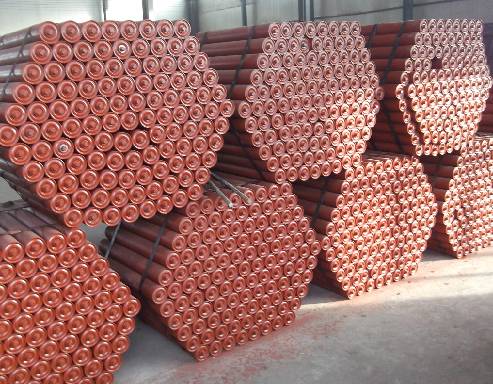 Afrikaans
Afrikaans  Albanian
Albanian  Amharic
Amharic  Arabic
Arabic  Armenian
Armenian  Azerbaijani
Azerbaijani  Basque
Basque  Belarusian
Belarusian  Bengali
Bengali  Bosnian
Bosnian  Bulgarian
Bulgarian  Catalan
Catalan  Cebuano
Cebuano  Corsican
Corsican  Croatian
Croatian  Czech
Czech  Danish
Danish  Dutch
Dutch  English
English  Esperanto
Esperanto  Estonian
Estonian  Finnish
Finnish  French
French  Frisian
Frisian  Galician
Galician  Georgian
Georgian  German
German  Greek
Greek  Gujarati
Gujarati  Haitian Creole
Haitian Creole  hausa
hausa  hawaiian
hawaiian  Hebrew
Hebrew  Hindi
Hindi  Miao
Miao  Hungarian
Hungarian  Icelandic
Icelandic  igbo
igbo  Indonesian
Indonesian  irish
irish  Italian
Italian  Japanese
Japanese  Javanese
Javanese  Kannada
Kannada  kazakh
kazakh  Khmer
Khmer  Rwandese
Rwandese  Korean
Korean  Kurdish
Kurdish  Kyrgyz
Kyrgyz  Lao
Lao  Latin
Latin  Latvian
Latvian  Lithuanian
Lithuanian  Luxembourgish
Luxembourgish  Macedonian
Macedonian  Malgashi
Malgashi  Malay
Malay  Malayalam
Malayalam  Maltese
Maltese  Maori
Maori  Marathi
Marathi  Mongolian
Mongolian  Myanmar
Myanmar  Nepali
Nepali  Norwegian
Norwegian  Norwegian
Norwegian  Occitan
Occitan  Pashto
Pashto  Persian
Persian  Polish
Polish  Portuguese
Portuguese  Punjabi
Punjabi  Romanian
Romanian  Russian
Russian  Samoan
Samoan  Scottish Gaelic
Scottish Gaelic  Serbian
Serbian  Sesotho
Sesotho  Shona
Shona  Sindhi
Sindhi  Sinhala
Sinhala  Slovak
Slovak  Slovenian
Slovenian  Somali
Somali  Spanish
Spanish  Sundanese
Sundanese  Swahili
Swahili  Swedish
Swedish  Tagalog
Tagalog  Tajik
Tajik  Tamil
Tamil  Tatar
Tatar  Telugu
Telugu  Thai
Thai  Turkish
Turkish  Turkmen
Turkmen  Ukrainian
Ukrainian  Urdu
Urdu  Uighur
Uighur  Uzbek
Uzbek  Vietnamese
Vietnamese  Welsh
Welsh  Bantu
Bantu  Yiddish
Yiddish  Yoruba
Yoruba  Zulu
Zulu Exploring the Benefits and Applications of Roller Lagging in Industrial Machinery Maintenance
Understanding Roller Lagging A Critical Component in Conveyor Systems
Roller lagging is a crucial technology used primarily in the material handling industry, specifically in conveyor systems. This process involves coating or covering the surface of conveyor rollers with a resilient material, typically rubber or polyurethane. The purpose of roller lagging is to enhance the traction, efficiency, and longevity of conveyor systems that transport materials across various industries, including mining, agriculture, and manufacturing.
The primary function of roller lagging is to improve the grip between the conveyor belt and the rollers. Conveyor belts are designed to carry heavy loads over long distances, making it essential that they maintain a consistent and powerful traction throughout their operation. Traditional rollers, which may be made of metal or plastic, can lead to slippage when handling heavy loads, thereby causing wear and tear on the conveyor system, unnecessary downtime, and increased maintenance costs. By applying a layer of lagging, the friction between the belt and the roller is enhanced, significantly reducing the chances of slippage.
In addition to improving traction, roller lagging serves to protect the rollers themselves
. Over time, constant exposure to abrasive materials and harsh operating conditions can lead to the degradation of roller surfaces. Lagging acts as a protective shield, absorbing impacts and preventing wear from abrasive materials. This prolongs the lifespan of the rollers, minimizing replacement costs and downtime. Furthermore, the availability of different types of lagging materials—each with unique properties—allows for customizable solutions tailored to specific operational needs.roller lagging

The type of lagging material used can significantly influence the performance of conveyor systems. For instance, rubber lagging is often favored for its outstanding grip and resilience, making it ideal for handling heavy materials like gravel or coal. On the other hand, polyurethane lagging can possess unique wear-resistance properties, making it suitable for applications requiring high durability and less maintenance. The choice of material depends on the nature of the materials being transported, operating environments, and the desired longevity of the equipment.
In addition to traction enhancement, roller lagging can offer additional benefits such as noise reduction and vibration dampening. The elasticity of rubber or polyurethane can absorb vibrations generated during the transportation process, leading to a quieter operation and reducing stress on the surrounding structural components. This is particularly important in settings where noise regulations are stringent, or where worker safety and comfort are of concern.
Implementing roller lagging into a conveyor system can increase overall efficiency and productivity. By reducing slippage and wear, companies can minimize downtime and the need for frequent maintenance. This not only optimizes operations but also leads to a safer working environment. Properly lagged rollers can help prevent accidents that might occur due to equipment failure, thus promoting workplace safety.
In conclusion, roller lagging is an essential aspect of modern conveyor systems, providing numerous benefits including enhanced traction, prolonged equipment lifespan, and increased operational efficiency. As industries continue to evolve, the demand for reliable and efficient material handling methods will only grow. Investing in high-quality roller lagging not only addresses immediate operational challenges but also positions companies for future success in an increasingly competitive landscape. Understanding the nuances of roller lagging can empower businesses to optimize their conveyor systems and ensure a safer, more productive work environment.
-
Revolutionizing Conveyor Reliability with Advanced Rubber Lagging PulleysNewsJul.22,2025
-
Powering Precision and Durability with Expert Manufacturers of Conveyor ComponentsNewsJul.22,2025
-
Optimizing Conveyor Systems with Advanced Conveyor AccessoriesNewsJul.22,2025
-
Maximize Conveyor Efficiency with Quality Conveyor Idler PulleysNewsJul.22,2025
-
Future-Proof Your Conveyor System with High-Performance Polyurethane RollerNewsJul.22,2025
-
Driving Efficiency Forward with Quality Idlers and RollersNewsJul.22,2025





























